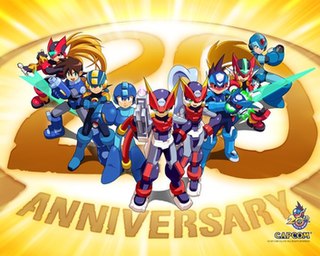
Mega Man is a Japanese science fiction video game franchise created by Capcom, starring a series of robot characters each known by the moniker "Mega Man". The original game was released for the Nintendo Entertainment System in 1987, and spawned a franchise that expanded to over 50 games on multiple systems. As of July 2023, the series has sold 40 million units worldwide.
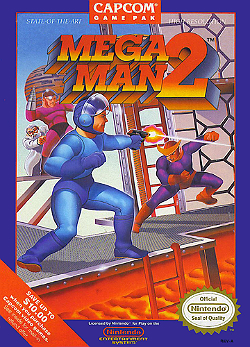
Mega Man 2 is an action game developed and published by Capcom for the Nintendo Entertainment System. It was released in Japan in 1988 and in North America and PAL regions the following years. Mega Man 2 continues Mega Man's battle against the evil Dr. Wily and his rogue robots. It introduced graphical and gameplay changes, many of which became series staples.

Mega Man 5 is an action-platform video game developed by Capcom for the Nintendo Entertainment System. It is the fifth game in the original Mega Man series and was released in Japan on December 4, 1992. It saw a release during the same month in North America and in 1993 in Europe.

The California Raisins were a fictional rhythm and blues animated musical group as well as advertising and merchandising characters composed of anthropomorphized raisins. Lead vocals were sung by musician Buddy Miles. The California Raisins were popular in the mid-to-late 1980s through claymation TV commercials and animated specials, winning an Emmy Award and one nomination.

Commando, released as Senjō no Ōkami in Japan, is a vertically scrolling run and gun video game released by Capcom for arcades in 1985. The game was designed by Tokuro Fujiwara. It was distributed in North America by Data East, and in Europe by several companies including Capcom, Deith Leisure and Sega, S.A. SONIC. Versions were released for various home computers and video game consoles. It is unrelated to the 1985 film of the same name, which was released six months after the game.

U.N. Squadron is a 1989 side-scrolling shooting game released by Capcom for the CPS arcade hardware and for the Super Nintendo Entertainment System. The game was released in Japan as Area 88, and is based on the manga series of the same name, featuring the same main characters. Their mission is to stop a terrorist group known as Project 4. It was followed by a spiritual successor Carrier Air Wing.
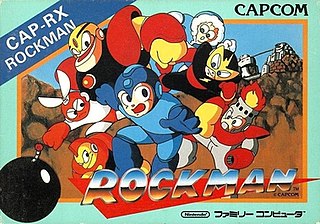
Mega Man, known as Rockman in Japan, is a platform game developed and published by Capcom in 1987 for the Nintendo Entertainment System. It was directed by Akira Kitamura, with Nobuyuki Matsushima as lead programmer, and is the first game of the Mega Man franchise and the original video game series. Mega Man was produced by a small team specifically for the home console market, a first for Capcom, which previously focused on arcade video games.

Spider-Man: Return of the Sinister Six is a video game featuring the Marvel Comics characters Spider-Man and the Sinister Six. It was developed by Bits Studios and published by Acclaim Entertainment under the LJN banner for the Nintendo Entertainment System in 1992. Versions of the game were also released for the Master System and Game Gear by Acclaim's Flying Edge division. The game is loosely based on the story arc of the same name, which was published in The Amazing Spider-Man #334-339 in the early 1990s.
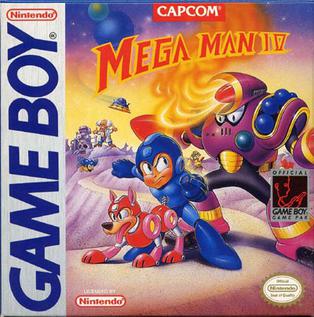
Mega Man IV is an action-platform video game by Capcom for the Nintendo Game Boy. It is the fourth installment in the handheld version of the Mega Man series. The game continues the quest of the protagonist Mega Man in the struggle with his long-time nemesis Dr. Wily, who sends out a disruptive radio signal to cause a rampage, citywide destruction from dormant robots. Mega Man IV features the traditional action platforming gameplay of the prior games while introducing one new feature, the ability to purchase items with power-ups found throughout each stage. As with previous Game Boy releases, the game incorporates gameplay elements and bosses from two sequential Nintendo Entertainment System (NES) games: Mega Man 4 and Mega Man 5. The game has received a warm critical reception. In 2013, Mega Man IV was made available on the Virtual Console of Japan's Nintendo eShop for the Nintendo 3DS. It was later released in the North American and PAL region eShops the following year.

G.I. Joe: A Real American Hero is a 1991 run and gun game published by Taxan for the Nintendo Entertainment System based on the toyline of the same name. The game was produced by Ken Lobb and developed by the same Japanese team that later formed KID. A sequel developed by the same team, titled G.I. Joe: The Atlantis Factor, was released the following year, but was published by Capcom after Taxan went out of business.

Legendary Wings is a fantasy-themed shoot-'em-up / platformer arcade video game released by Capcom in 1986. The player takes control of a young soldier equipped with magical wings who must save the world from a malfunctioning supercomputer. A home version for the Nintendo Entertainment System was released exclusively in North America in 1988. The original coin-op version is included in Capcom Classics Collection for PlayStation 2 and Xbox and in Capcom Classics Collection Remixed for PlayStation Portable.

The Little Mermaid is a licensed action game by Capcom for the NES and Game Boy, based on the 1989 Disney film of the same name.

G.I. Joe: The Atlantis Factor is an action-platform video game developed by KID and published by Capcom for the Nintendo Entertainment System. It was released only in North America in 1992. Previously, a G.I. Joe video game was released for the NES by Taxan in 1991.

Mega Man 9 is a 2008 action-platform video game developed by Capcom and Inti Creates. It is the ninth numbered game in the original Mega Man series, and the first home console game in the series since Mega Man & Bass (1998). Mega Man 9 was the first game in the series not to have a physical release, and was initially released only on the downloadable gaming services WiiWare, PlayStation Network (PSN), and Xbox Live Arcade (XBLA). In June 2017, it was announced that Mega Man 9 and 10 would have a physical and digital release with their inclusion in Mega Man Legacy Collection 2 for PlayStation 4, Windows, and Xbox One, as well as the Nintendo Switch in May 2018.

Section Z is a horizontally scrolling shooter by Capcom, released as an arcade video game in 1985. A home version was published for the Nintendo Entertainment System in 1987.
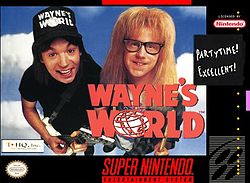
Wayne's World is an action video game based on the film of the same name and released in 1993 by THQ. Different versions of the game were released; the NES and Game Boy games were developed by Radical Entertainment and feature both protagonists Wayne and Garth as playable characters. The Super NES and Sega Mega Drive/Genesis games were developed by Gray Matter and feature only Wayne as a playable character.
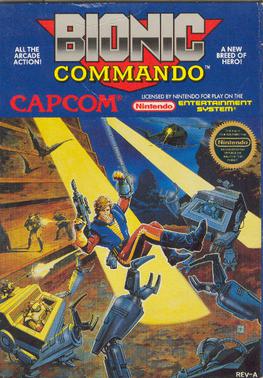
Bionic Commando, originally released as Hitler's Resurrection: Top Secret in Japan, is a platform game released by Capcom for the Family Computer and Nintendo Entertainment System in 1988. It is based on the 1987 arcade game Bionic Commando.

Mega Man, known as Rockman in Japan, is the title character and the protagonist of the Mega Man series by Capcom. He was created by Akira Kitamura for the first Mega Man game released in 1987, with artist Keiji Inafune providing detailed character artwork based on Kitamura's pixel art design.
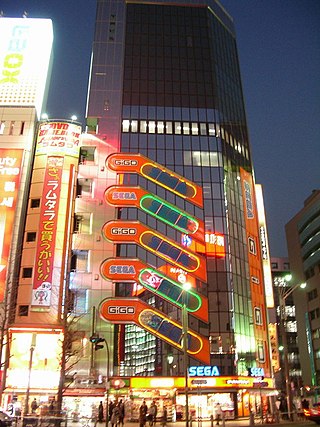
Video games are a major industry in Japan, and the country is considered one of the most influential in video gaming. Japanese game development is often identified with the golden age of video games, including Nintendo under Shigeru Miyamoto and Hiroshi Yamauchi, Sega during the same time period, Sony Computer Entertainment when it was based in Tokyo, and other companies such as Taito, Bandai Namco Entertainment, Capcom, Square Enix, Konami, NEC, and SNK, among others.
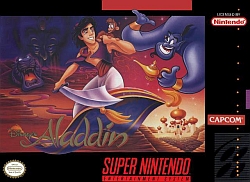
Disney's Aladdin is a 1993 platform game developed and published by Capcom for the Super Nintendo Entertainment System, based on the 1992 animated Disney film of the same name. Disney's Aladdin is a 2D side-scrolling video game in which the player controls Aladdin and his monkey Abu. It was designed by Shinji Mikami.





















